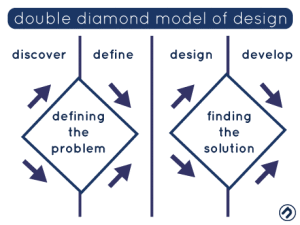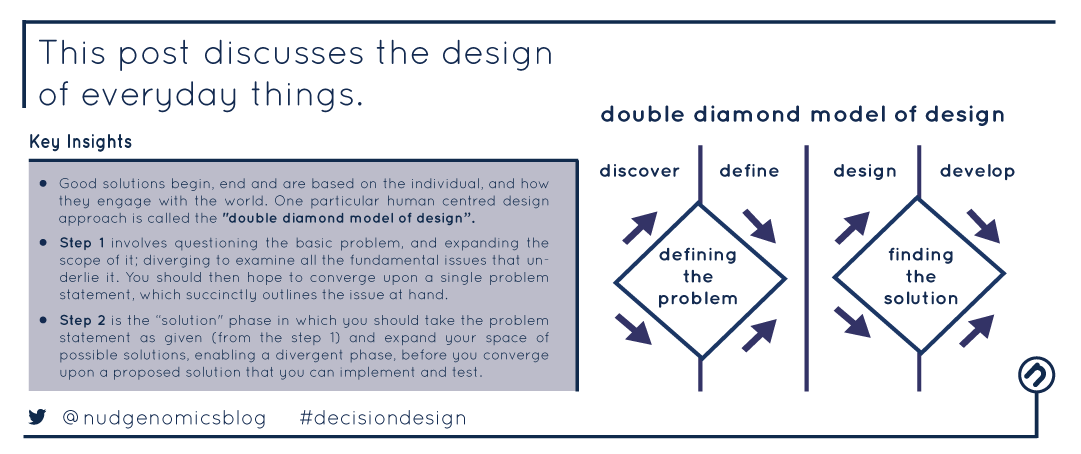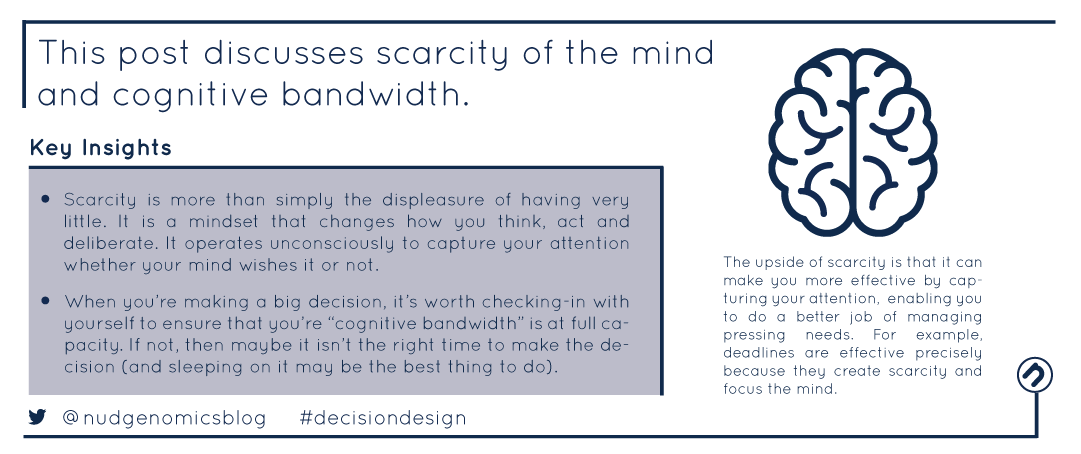
nudgenomics behavioural science blog
@nudgenomicsblog subscribe to get our latest behaioural insights delivered to your inbox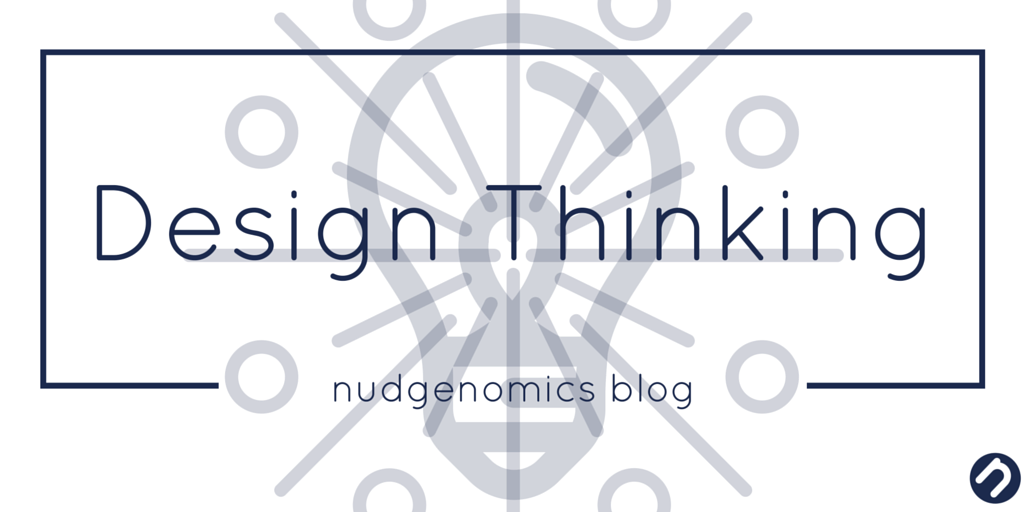
A discussion on the design of everyday things:
This week we discuss how accepting human behaviour the way it is, not the way we wish to be, is critical to good design. This deceptively simple point underpins Don Norman’s whole design philosophy, which he outlines quite brilliantly in “The Design of Everyday Things”.
The behavioural insights movement is similar in that it too looks for opportunities to design choice environments in ways that flow with, rather than against, the psychology of individual decision-making. An excellent how-to guide for implementing this approach in practice is the UK Behavioural Insight Team’s “EAST” publication, which discusses a framework for how decision designers can make (and should make) products and services more Easy, Attractive, Salient and Timely to consumers or citizens.
When we first use a product or service, we often face two gaps in our thinking:
The first gap is one of execution, in that we need to figure out how the product or service in question works. If we don’t, we won’t be able to fully engage with it. For example, if the service in question is a government support scheme for those who are in long-term unemployment, the opportunity cost of a poorly designed process is significant (long-term unemployment levels remain unchanged or even worse are driven higher). A more trivial example is a poorly designed emergency exit door in an office building that states push but has a large handle on the right hand side of the door that tends to invoke a natural pull reflex (which could make all the difference in an emergency situation).
The second gap is one of evaluation, which is about figuring out what happens once we execute the action. How do we know that we interacted with the product or service correctly and how do we rate the output of this interaction? Are we satisfied or are we left wondering if it worked at all? A simple example might be an online contact form on a company’s website. Once you submit your message, the message box clears, the page refreshes, but you are unsure as to whether your message was submitted to the company successfully. If however, a simple message stated “Thank you for your message. We will reply to you as soon as we can.” appeared, this would immediately ease your concern and offer you the certainty that your intended action (sending a message to the company) was successful.
If we are the designer of the product or service (or of the choice architecture), we need to think about how the first thing a consumer or citizen will need to do when they are introduced to the new product or service is to determine they’re relationship with it. Norman refers to this as the affordance, and uses the example of a chair, which affords (“is for”) support and, therefore, affords sitting. Next is the signifier, which communicates where the action should take place. Good communication of the purpose, structure, and operation of the product or service to the people who use it, is a necessary (but not sufficient) condition of good design. Whereas affordances may be perceivable, signifiers must be, else they fail to function altogether.
The next concept designers need to think about is mapping, which covers the layout of the control and design. Following this, Norman discusses the importance for a designer to appreciate our conceptual models (for the product or service), and how different people may hold different mental models for the same product or service. As the consumer or citizen cannot talk to the designer, they rely upon whatever information is available to them at the time of interaction. The combined information available to consumer or citizen at this point is referred to as the system image.
For user feedback to be effective it must be immediate and relevant; poor feedback can actually be worse than no feedback at times. It needs to be planned and prioritised, so that unimportant information is presented in an unobtrusive fashion, while important information is presented in a way that does capture attention. This is evident in the manner in which well designed websites highlight their call-to-action buttons while also displaying other (but less relevant) information on their webpage.
Conceptual models help people to form stories for themselves which satisfies their predisposition to need to find and have explanations; to be able to assign cause and effect to things that they do, and more importantly don’t do. Stories have the wonderful ability to resonate with people’s experiences, and to provide examples of new instances (which are very useful when first introduced to a product or service).
An industry in which people have very poor conceptual models is the healthcare industry (from the patient’s perspective). Often, a patient does not have the appropriate conceptual model to help them easily communicate information to their physician, or to interpret and incorporate their physician’s medical diagnosis into their own decision about their personal health. This is why we see so many doctors still acting paternalistically towards their patients (making decisions on their behalf). If we are to improve patient decision making, we need to develop better ways for patients to tell themselves (and others) stories about their health; empowering patients to own their health condition and treatment.
Practically speaking, choice architects should take into account Norman’s seven fundamental principles of design which he has developed, refined and tested over many decades of practice and implementation:
- Discoverability: is it possible for the consumer or citizen to discover what actions are possible as well as what the current state of the product/service is?
- Feedback: is there full and continuous information about the results of the consumer or citizen’s actions available to them at the point of interaction?
- Conceptual Model: does the design project all of the information needed to create a good conceptual model of the system for the consumer or citizen (leading to understanding and a feeling of control)?
- Affordances: do the proper affordances exist for the consumer or citizen to make the desired action possible?
- Signifiers: is there an effective use of signifiers to ensure discoverability by the consumer and citizen) Is feedback well communicated and timely?
- Mappings: does the relationship between the controls and their actions follow the principles of good mapping, enhanced as much as possible through spatial layout and temporal contiguity?
- Constraints: are appropriate constraints (physical, logical, semantic, and cultural constraints) provided in order to guide actions and eases interpretation?
An excellent point Norman spends time discussing in this book is our tendency to blame ourselves when we cannot use an everyday product or service (especially if we see that others are able to use it). He asks us to suppose the fault really lies in the device/process/system, so that lots of people have the same problems. Because everyone perceives the fault to be his or her own, nobody wants to admit to having trouble.This creates a “conspiracy of silence”, where feelings of guilt and helplessness among people are kept hidden. This “learned helplessness” phenomenon refers to the situation in which we experience repeated failure at a task, and as a result of this repeated failure we decide that the task cannot be done (at least not by us) and we stop trying. As such, Norman advises designers to remember not to blame the consumer or citizen when they fail to use their products or services properly. The smarter approach is to take peoples difficulties as signifiers of where the product or service can be improved (and to focus on improving these issues/features of the product or service).
Good design also requires that we treat each of theses failures in the same way; that we systematically and rigorously conduct root cause analysis (asking why until the ultimate fundamental cause of the activity is reached) to find the fundamental causes of the failure; enabling us to redesign the system so that these can no longer lead to problems.
Errors cannot be eliminated until we know what they are, but the mechanism for reporting errors in many organisations (public or private, both big and small) is often made extremely difficult by social pressures present in the workplace. For example, if we take the healthcare industry again, physicians often do not want to admit that they, or others, have made a mistake for fear of being punished or being litigated against. This culture makes it very difficult for past mistakes to be avoided as learning cannot occur. Reporting errors in this situation as well as more broadly, needs to be made easier, for the true goal is not to punish but to determine how the error occurred and change things so that it does not occur again. We can all start by reframing errors as an opportunity for us and our teams and organisations to learn and develop; to improve things for others going forward (and not simply as past mistakes).
nudging people to engage and focus:
In the closing pages of this delightful read, Norman discusses something that is of great relevance to our ever more technologically integrated and enabled world; that very few products or services today are designed to support the numerous interruptions that so many of our working and personal life situations entail (receiving a call or a text message while in a meeting, someone “desk-dropping” by your work station, getting a snapchat notification when you’re entertaining friends, etc.). In this age of distraction and social media bombardment (in which the lure of instant reward and gratification tempts us at every turn), nudging users to fully engage and focus on the activity at hand will become ever more important if we are to ensure that people live a productive and fulfilling life – as is evidenced by the many new phone and desktop apps that block particular websites for a certain period of time or limit the amount of time you can spend on the site / app.
“The Design of Everyday Things” is much more than a guide to good design. It is a treatise of how we should, and need to, think about how we solve our societal problems. Good solutions begin, end, and are based on the individual, and how they engage with the world. Designing with the end user in mind, quickly and effectively eliciting user feedback, as well as conducting rigorous root-cause analysis, are but three simple ways in which we can truly understand the problem at hand and how we can solve any issue that we face.
How can insights from this book help you in your day-to-day activities?
When a consumer or citizen first uses a product or service, they often face two gaps in our thinking. The first gap is one of execution in that they need to figure out how the product or service in question works. The second gap is one of evaluation, which is about figuring out what happens once they execute the action. How do they know that we interacted with the product or service correctly and how do they rate the output of this interaction? Are they satisfied or are they left wondering if it worked at all?
If you are to help your customers or citizens bridge these two gaps then it is important to think about the different stages of action from “the user’s” point of view. Though most behaviours will not require going through all of these stages, most activities will require a number of them:
- Forming the goal of action
- Planning the action
- Specifying an action sequence
- Performing the action sequence
- Perceiving the state of the world
- Interpreting the perception
- Comparing the outcome with the goal
The Double Diamond Model of Design
Good solutions begin, end and are based on the individual, and how they engage with the world. One particular human centred design approach that you could employ in the office or at home, is the “double diamond model of design”.
- This approach involves starting by questioning the basic problem, and expanding the scope of it, diverging to examine all the fundamental issues that underlie it. You should then hope to converge upon a single problem statement, which succinctly outlines the issue at hand.
- During the second “solution” phase, you should take the problem statement as given (from the previous step) and expand your space of possible solutions, enabling a divergent phase, before you converge upon a proposed solution.
About the author of “The Design of Everyday Things”, Don Norman:
Don Norman is Director of the recently established Design Lab at of California, San Diego where he is also professor emeritus of both psychology and cognitive science.
He is cofounder of the Nielsen Norman Group, an IDEO fellow, Trustee of IIT’s Institute of Design (Chicago), and former Vice President of Apple. He is a member of the National Academy of Engineering and a fellow of the American Academy of Arts and Sciences. He is professor emeritus of computer science and design at Northwestern University.
He has been Distinguished Visiting Professor of Industrial Design at Korea’s Advanced Institute of Science & Technology (KAIST). He was awarded the Benjamin Franklin medal in Computer and Cognitive Science, has honorary degrees from the University of Padua (Italy) and the Delft University of Technology (Netherlands) and is an honorary professor of Design and Innovation at Tongji University in Shanghai.
Some other interesting reads by Norman that you may enjoy include:
If you’ve enjoyed this behavioural science read, then make sure to join thousands others on our mailing list here and we’ll make sure to send you on any future posts. You can also follow us on twitter @nudgenomicsblog.
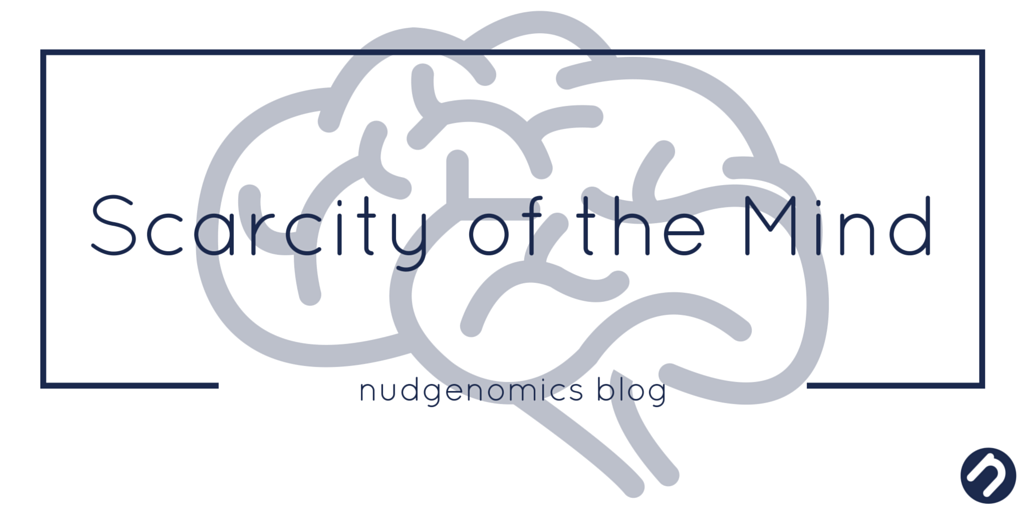
A discussion on scarcity of the mind and "cognitive bandwidth":
This post is based primarily on the book: “Scarcity – The New Science of Having Less and How It Defines Our Lives” by Sendhil Mullainathan and Eldar Shafir.
Drawing on cutting-edge research in behavioral science and economics, their research provides us with a new way of understanding why the poor stay poor and the busy stay busy; revealing not only how scarcity leads us astray but also how individuals and organisations can better manage scarcity for greater satisfaction and success.
In our last post we discussed the psychology of optimal experience and the eight components of enjoyment that Mihalyi Csikszentmihalyi defined as required in order to experience “flow”. One of the eight components states that: “Your deep but effortless involvement in the task removes the worries and frustrations of everyday life from your mind”. To let the“worries and frustrations” of your everyday life go, however, when you have very little is nigh on impossible. The scarcity of the mind that you experience is because you are trying to struggle with less than you need, reducing your capacity to think and making you incapable of making decisions that are in the interest of your long-term well-being and happiness.
Scarcity also costs you because you will begin to neglect other concerns, quickly becoming less effective in the rest of your life. This reduction in your “bandwidth” means that you are less insightful, less forward-thinking, and less controlled. Your ability to focus and pay attention is seriously hampered, making it exceptionally difficult to stick to your plans or to resist temptation. It is important to appreciate that scarcity is more than simply the displeasure of having very little. It is a mindset that changes how you think, act and deliberate; operating unconsciously to capture your attention whether your mind wishes it or not. By staying top of mind, it affects what you notice, how you weigh your choices and ultimately what you decide and behave. Just as the starving have food forever on their mind, when you experience scarcity of any kind, you become absorbed by it. We often choose differently, creating certain benefits (you are more effective in the moment) while also coming at a cost (your single-mindedness leads you to neglect things we actually value).
To take a personal example:
Over the course of a month I decided to track the effect pain played on my day-to-day dietary decision making ability (I suffer from chronic pain due to nerve and disc damage in my lower back). When pain was all that was on my mind, I was entirely consumed by it, completely unable to focus on anything else; from reading, to writing, to engaging in social interactions going on around me. It was in these moments that I tended to make poor dietary decisions (particularly salt & vinegar crisps – a favourite of mine!), choosing immediate and comforting gratification over long-term healthiness. Understanding more about this unhealthy habit, I decided to experiment with my diet by removing all of the unhealthy snacks from my home and replacing them with relatively healthier ones (research on habit formation has shown that there are three stages to the process – the trigger, the activity, and the reward – and that the most effective stage to intervene for behavioural change is the activity stage). After numerous experimental set-ups, I found that the healthier product satisfied my desire to snack, without adding to my waistline in the same was as with the unhealthy snack. Though scarcity of the mind is certainly at play when I was in pain, my depleted willpower state was also clearly evident; willpower is like a muscle, in that it is worn down the more often it is exerted. This is why when I had both the popcorn and crisps available to me, I chose the crisps every-time (hands down). Thus, when in pain I not only had reduced cognitive “bandwidth”, but my ability for self-control was also seriously weakened and as such, it was important that I removed the unhealthy item from the choice set, nudging me to select the healthier alternative and ensuring that I did not succumb to my depleted willpower state.
Upside of scarcity:
The upside of scarcity is that it can make you more effective by capturing your attention, enabling you to do a better job of managing pressing needs. For example, deadlines are effective precisely because they create scarcity and focus the mind. This “focus dividend” enables you to do something you could not do easily on our own. That said, instead of saying that scarcity “focuses”, you could just as easily say that scarcity causes you to tunnel and “to focus single-mindedly on managing the scarcity at hand, inhibiting competing concepts in the mind”. The key takeaway from Mullainathan and Shafir’s research on scarcity is that the poor are in no shape or form any less capable than the well-off. Rather it is because part of their mind is captured by scarcity that they have lower effective capacity than those who are well off; with scarcity on their mind, they simply have less mind space for everything else.Under these conditions we would all be primed to fail (and to think otherwise is hubris). Reading this book has prompted me to take a moment to reflect on how little we actually notice, or attend to, our own fluctuating cognitive capacities. I think that this is a huge mistake – if we actively managing our “bandwidth”, we could preemptively “scarcity-proof” our own environments (as I outlined in my personal example when I removed the unhealthy snacks from my home). Preparing for the inevitable tunnelling we will experience at some point or another, helps to insulate ourselves against making a very poor long-term choice in any one single moment. When we’re making a big decision, it’s probably worth checking in with ourselves to ensure that we’re functioning at full bandwidth capacity. If not, then maybe it isn’t the right time to decide and “sleeping on it” really is the best thing for you do (only if that’s possible of course). In short, it’s not that the poor have less bandwidth as individuals. Rather, experiencing and living in poverty reduces anyone’s bandwidth. When we are reasonably well-off and scarcity is absent from our lives, this does not just allow us to buy more goods, but affords us the extraordinary luxury of not having to think. As Thoreau observed: “A man is rich in proportion to the number of things he can afford to let alone”.
How can the insights from this book help you to improve the way in which you live your life?
Two skills you should think about developing are:
- Firstly, whether or not you feel your capable of making the decision in the first place; A pre-decision decision. This is not an excuse to put off an important decision, but rather an acknowledgment of the reality of the situation. If you do not have the cognitive capacity at the time, you will not make the best decision you are capable of making (and would like to make).
- Secondly, you need to understand the power of your emotionally “hot” state (which you may actually be in – this is what your first point asks you to consider) and how you will combat your “in the moment” urges to go against your intended plan of action. Actively considering how you will react to these challenging moments of scarcity, will truly define how successful you will be in sticking to your plans.
About the Authors of “Scarcity – The New Science of Having Less and How It Defines Our Lives”
- Sendhil Mullainathan is a Professor of Economics at Harvard University. His real passion is behavioral economics, understanding what makes people tick – whether a senior executive in New York or a farmer in rural Tamil Nadu.
- Eldar Shafir. was born in Israel, and has lived in the US for the past 30 years. He is a professor at Princeton University, where he studies and teaches decision making, cognitive science, and behavioral economics. He is co-founder and scientific director at ideas42, a non-for-profit social science R&D lab, where talented people apply behavioral insight in attempts to make the world a slightly better place.
If you have enjoyed this post and would like us to email you our future posts on behavioural science, please sign-up to our mailing list here and follow us on twitter @nudgenomicsblog.

A discussion on the psychology of optimal experience:
This post discusses the book “Flow: The Psychology of Optimal Experience” by Mihalyi Csikszentmihalyi. “Flow” is as much a treatise on how one should approach living and meaning, as it is an an analysis of “optimal experience” (i.e. what makes an experience genuinely satisfying) . Having spent his career investigating this phenomena, this aptly titled book discusses Csikszentmihalyi’s main findings; namely that what makes an experience genuinely satisfying is a state of consciousness called “flow” and that enjoyment does not actually depend on what you do (as is often thought) but rather on how you do it. In an effort to define the different elements of enjoyment, Csikszentmihalyi and colleagues ran a number of studies on how people describe what they are doing and feeling when they experience “deep enjoyment, creativity and total involvement with life”. Two surprises findings they found were:
- Firstly in how similar very different activities were described by the participants when they were having a particularly enjoyable experience. For example, the description of “how a long-distance swimmer felt when crossing the English Channel was almost identical to the way in which a chess player felt during a tournament or a climber progressing up a difficult rock face”.
- Secondly, was that regardless of the culture, socio-economic status, age or gender of the participant, they described enjoyment in very much the same way. In short Csikszentmihalyi concludes that “optimal experience, and the psychological conditions that make it possible, seem to be the same the world over”.
The phenomenology of enjoyment has eight major components and when people reflect on how it feels when they are in flow, they tend to mention at least one, if not all, of the eight components. So, if you want to think about how you can work towards an optimal experience, you need to ensure that:
- You confront a challenging activity that requires skill and that you have a chance of completing;
- You have the ability to concentrate on what you are doing (merging of action and awareness);
- The activity you are undertaking has clear goals;
- And immediate feedback;
- Your deep but effortless involvement in the task removes the worries and frustrations of everyday life from your mind;
- You are able to exercise a sense of control over your actions;
- Your concern for self disappears (but paradoxically emerges stronger after your flow experience is over);
- During the completion of the activity), the sense of the duration of time is altered (hours pass by in minutes).
An activity that produces such experiences is so gratifying that people tend to be willing to do it for its own sake, regardless of what they will get out of it in the end. In order for you to create your own optimal experiences you must begin by establishing control over your attention, as this determines the shape and content of your life. Your consciousness consists of the things that you see, feel and desire, and this is all information that you can manipulate and re-shape for your own purposes. It is useful to think of your consciousness as “intentionally ordered information” that gives you the ability to control your subjective reality. For example, you can make yourself happy, or miserable, regardless of what is actually happening “outside”, just by changing the contents of your consciousness. As such, one of the most important traits to develop in order to have a fulfilling, successful and enjoyable life is the ability to persevere despite unforeseen obstacles, and to transform apparently hopeless situations into challenges to be overcome. As the the largest part of your life is spent working and interacting with others (especially with members of your family), it is also pretty important to think about how you can transform your job and personal interactions into flow-producing activities. Csikszentmihalyi humorously notes that: “One of the most ironic paradoxes of our time is this great availability of leisure that somehow fails to be translated into enjoyment”. Csikszentmihalyi concludes his treatise by discussing learning to control the body, its senses, and ones ability to enjoy solitude: “A person who rarely gets bored, who does not constantly need a favourite external environment to enjoy the moment, has passed the test for having achieved a creative life”.
How can the insights from this book help you to improve the way in which you live your life?
- You should spend time actively choosing how you will spend your time and how you will focus your attention. This will give you the power and control over your moment-to-moment experiences that are essential in order to experience flow.
- You should think about how you can cultivate the ability to persevere despite obstacles; this involves transforming apparently hopeless situations into challenges to be overcome. In order to do this, you will need to think about how you can reframe your situation as an opportunity to grow and develop (this is one of the best qualities you can develop as a person).
- Practically speaking, you can use the eight major components of Csikszentmihalyi’s phenomenology of enjoyment to evaluate your different activities and to guide you as to how your activities can be changed to be more likely to induce flow.
If you would like to read more on the topic, I would recommend reading the complete book “Flow: The Psychology of Optimal Experience” by Mihalyi Csikszentmihalyi. Other interesting reads by Csikszentmihalyi include:
- “Finding Flow: The Psychology of Engagement with Everyday Life:, New York: Basic Books, 1997.
- “Creativity: Flow and the Psychology of Discovery and Invention”, New York: Harper Collins, 1996.
- “The Evolving Self: A Psychology for the Third Millenium”, New York, Harper Collins, 1993.
Our next post will discuss “Scarcity: The New Science of Having Less and How It Defines Our Lives” by Sendhil Mullainathan and Eldar Shafir. Ps – If you have enjoyed this post and would like us to email you our future posts on behavioural science, please sign-up to our mailing list here and follow us on twitter @nudgenomicsblog. This post was written by Seán Gill (@gillse).
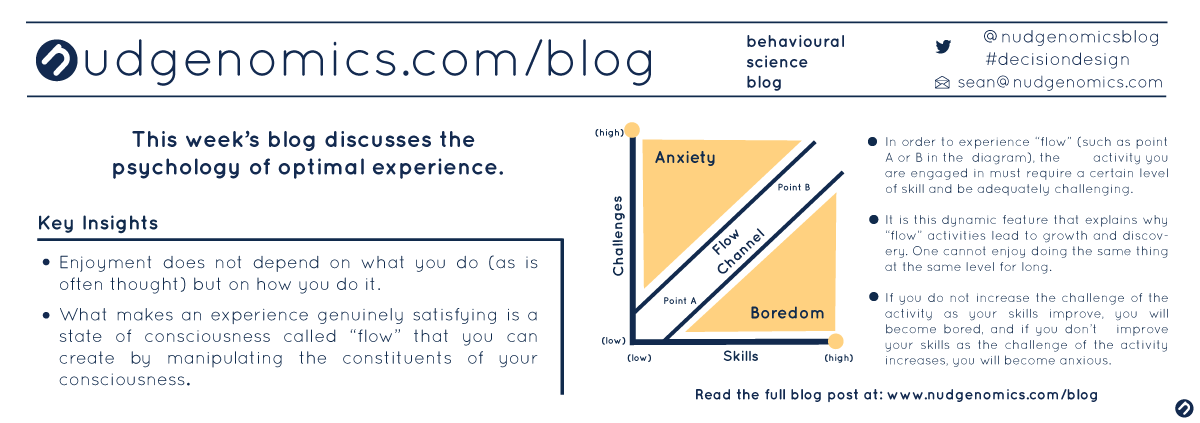

Seán Gill
curator of the nudgenomics behavioural science blog
